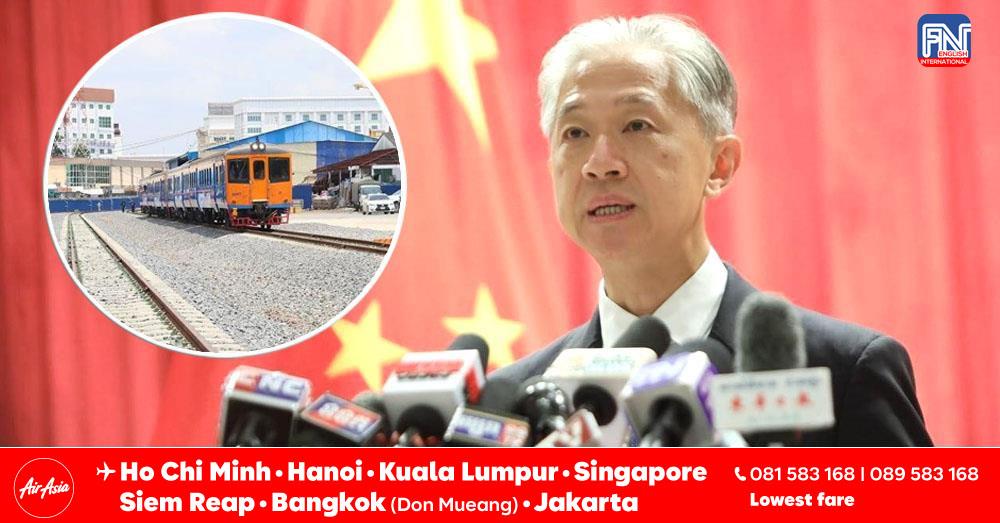Phnom Penh (FN), Apr. 19 – Chinese Ambassador to Cambodia Wang Wenbin affirmed that China places great importance on the high-speed railway project in Cambodia. He also revealed that discussions are underway regarding a potential railway link connecting Cambodia directly to China.
Wang Wenbin spoke on Saturday (Apr. 19) during a press conference held at the Chinese Embassy following Chinese President Xi Jinping’s state visit to Cambodia.
“I believe the Chinese side attaches great importance to railway cooperation and we will actively promote it. We think that expanding railway collaboration will benefit both China and Cambodia, as well as enhance regional connectivity and improve the efficiency of transporting people and goods. As for which countries the railway from China to Cambodia will pass through, discussions are ongoing,” the Ambassador underscored.
Regarding Cambodia’s own railway development plans, Minister of Public Works and Transport Peng Ponea announced on 5 April 2024 that Cambodia has already conducted studies and drafted a comprehensive development plan. The strategy is divided into two phases: a medium-term plan from 2023 to 2027, and a long-term plan from 2028 to 2033.
According to Minister Peng Ponea, the medium-term phase includes three railway development projects: upgrading the two existing lines (Phnom Penh–Sihanoukville and Phnom Penh–Poipet) to support higher-speed operations, and constructing two new railway links—one connecting Phnom Penh to Techo International Airport, and another linking Siem Reap International Airport to the Siem Reap city.
In the long-term phase from 2028 to 2033, Cambodia aims to implement five railway projects. These include building high-speed railways between Phnom Penh and Sihanoukville, Phnom Penh and Poipet, and a high-speed railway from Phnom Penh to Bavet on the Vietnamese border. One of the proposed routes would pass through Kampong Thom and Siem Reap to reach Poipet.
Additionally, Cambodia plans to establish an urban railway system in Phnom Penh to accommodate the capital’s rapid growth in urban traffic.
=FRESH NEWS





